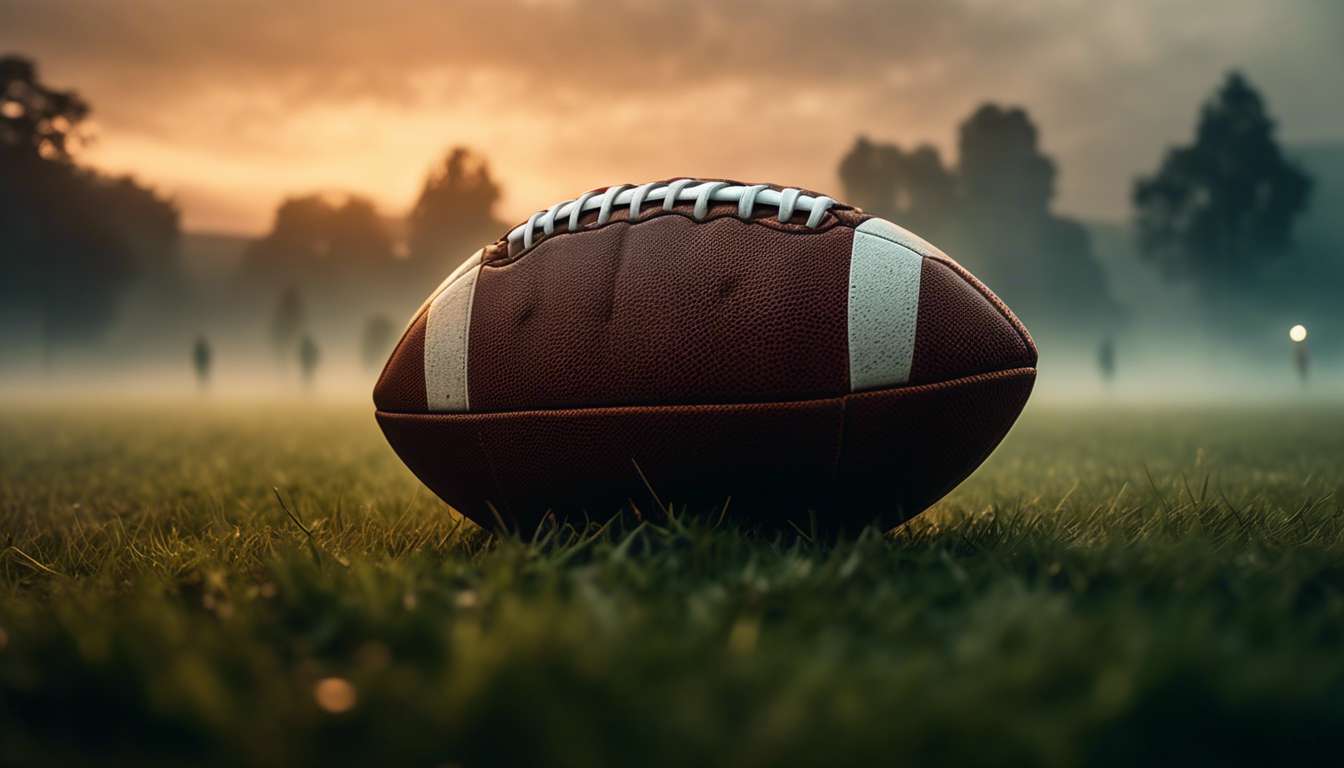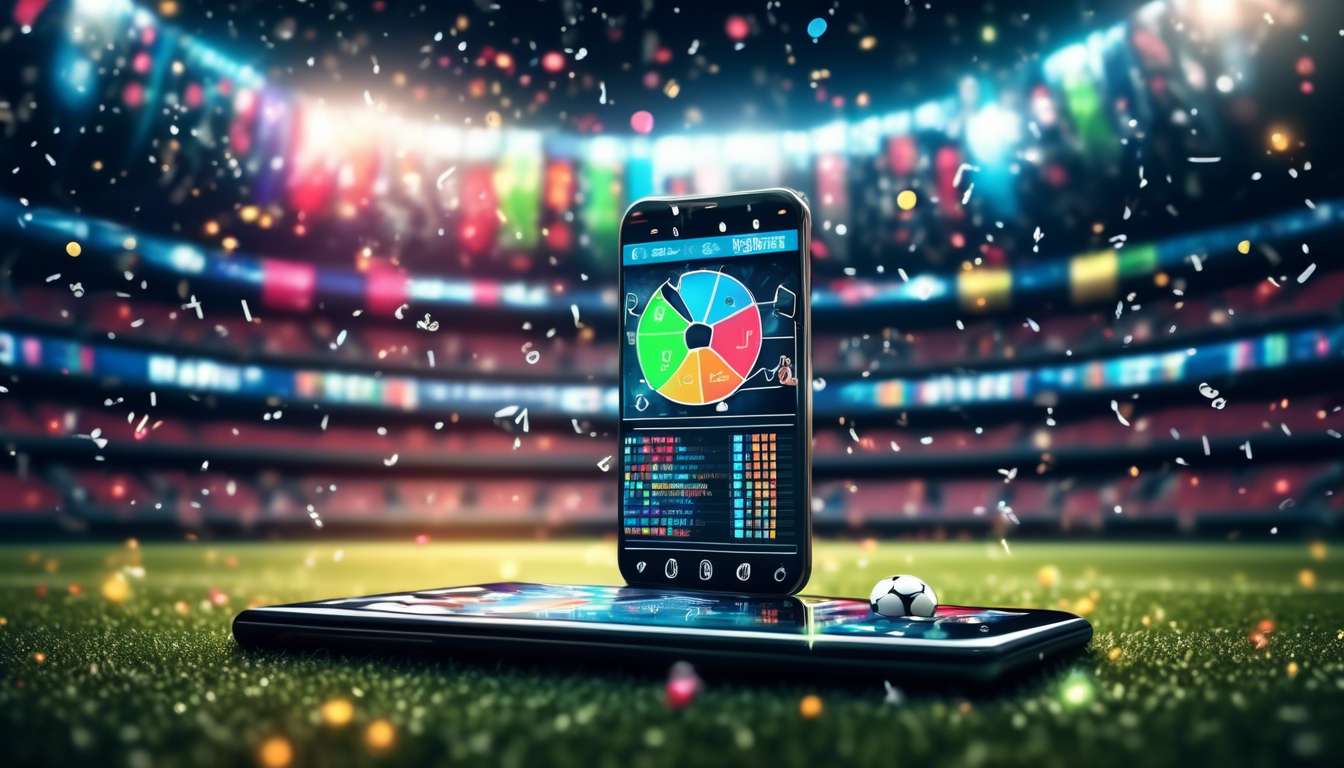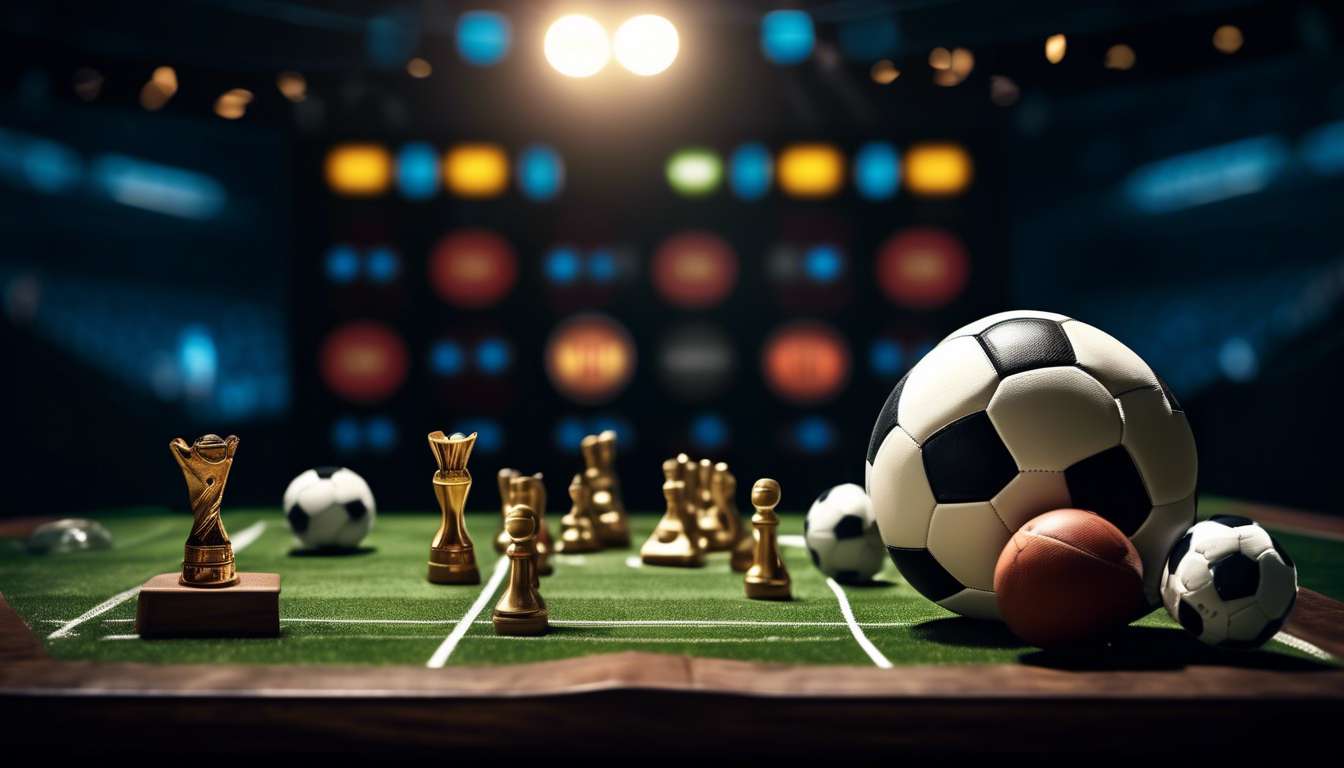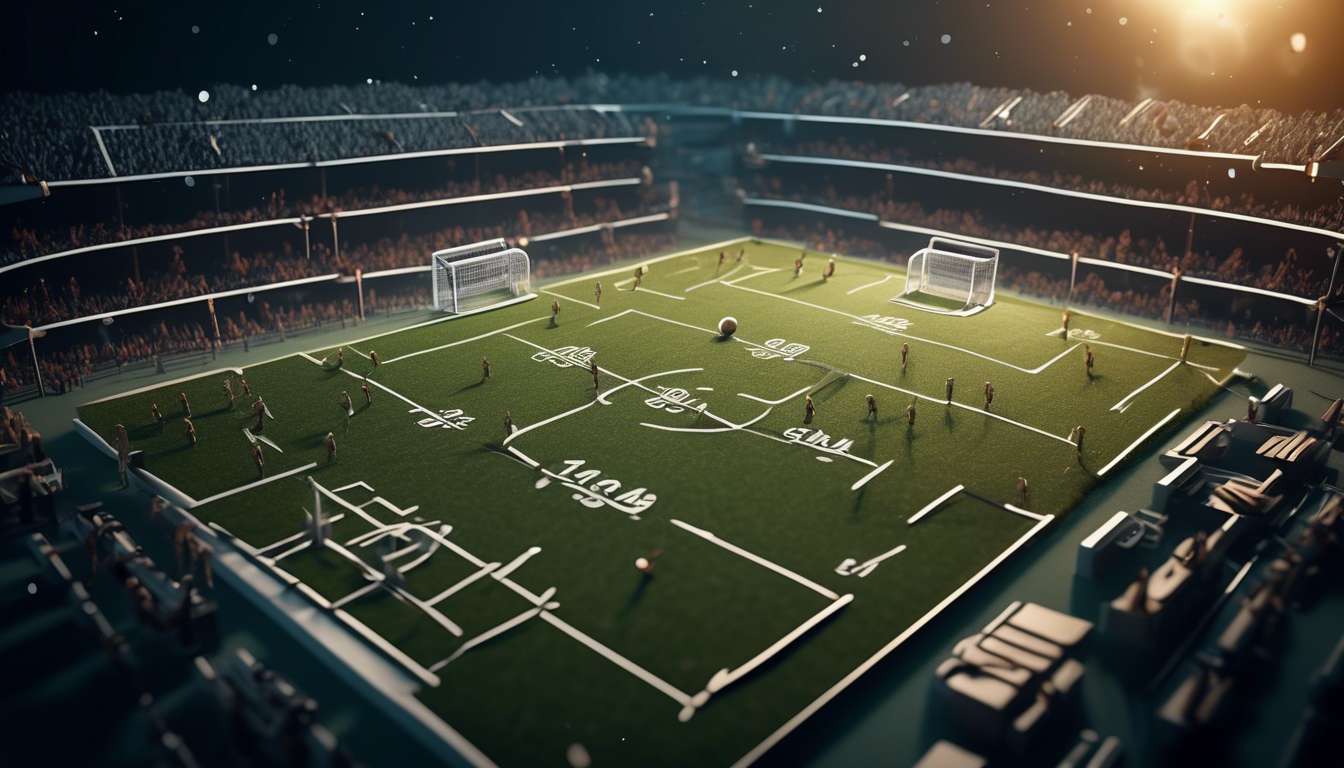As passionate sports fans, we find ourselves entrenched in the vibrant world of football, a realm filled with thrilling victories, heart-wrenching defeats, and endless debates. Over the years, we’ve encountered numerous myths that have woven themselves into the fabric of the game, influencing how we watch, discuss, and understand football.
Whether gathered in bustling stadiums, lively pubs, or cozy living rooms, these misconceptions often spark conversations and sometimes even lead us astray. Together, we’ve marveled at the legends and lore passed down through generations, often without questioning their validity.
Now, it’s time to delve deeper and separate fact from fiction. In this article, we’ll explore the top 10 football myths every sports fan should know, challenging the narratives we’ve accepted as truth and uncovering the realities behind them.
Let’s embark on this journey to reshape our understanding of the beautiful game and enhance our appreciation for its rich history.
The Ballon d’Or Curse
Many believe the Ballon d’Or curse strikes winners by hindering their performance or fostering team discord. We’ve all heard the whispers suggesting that once a player clinches this prestigious award, their game somehow suffers. Is it really the curse, or are we just searching for patterns where none exist?
As fans, we cherish belonging to a community that thrives on passionate debates and shared experiences.
Let’s consider the impact of the Ballon d’Or on a player’s career.
Could the added pressure from such an accolade lead to over-scrutiny by the media and fellow teammates? With the advent of VAR, every move is analyzed in excruciating detail, amplifying the pressure on these top performers.
During the transfer window, clubs might see a Ballon d’Or winner as an irresistible asset, leading to unexpected team changes and potential discord.
It’s fascinating how one golden trophy can stir so much speculation and conversation among us football enthusiasts.
Home Advantage Dominance
Home Advantage in Sports
We’ve all witnessed how playing at home can significantly boost a team’s performance. The cheers of thousands in familiar territory seem to provide an extra edge, creating an atmosphere that often intimidates the opposition and fuels players’ determination.
Changing Dynamics in Football
Yet, while home advantage is real, it’s not as dominant as some might think. In today’s football world, several factors have leveled the playing field:
- Referees, aided by VAR, make decisions less influenced by home crowd pressure.
- The constant movement during the transfer window often brings in players who are less affected by the intimidating aura of an away fixture.
Transcending Home Advantage
When we see players nominated for the Ballon d’Or, their success often transcends the confines of home advantage. Their skill shines in any stadium, proving that while home advantage provides a boost, it doesn’t guarantee dominance.
The Beauty of Unpredictability
We’ve grown to appreciate the beautiful unpredictability of the game we love, where talent and skill often outweigh the advantages of playing on home turf.
Transfer Window Madness
Every transfer window brings a whirlwind of speculation and excitement as clubs scramble to secure the best talent. We all gather around, sharing rumors and updates, eager to see who will be the next star wearing our club’s colors.
Yet, amid this frenzy, we’re often led to believe that a Ballon d’Or winner is the magic solution to our team’s woes. It’s a common misconception that a single superstar can instantly transform a squad’s fortunes.
The truth is, football’s unpredictability, coupled with factors like VAR decisions and team chemistry, plays a significant role. While signing a renowned player can uplift spirits, it doesn’t guarantee trophies.
Transfer windows are about building a cohesive unit, not just flashy signings.
Let’s enjoy the spectacle but stay grounded. We share this passion and understand that true success lies in unity and strategy, not just in headline-grabbing transfers.
Together, we embrace the beautiful game’s complexities.
Managerial Scapegoating Trend
In recent years, we’ve witnessed an increasing trend where managers are quickly blamed for a team’s poor performance, often becoming the first to face the axe. This scapegoating often oversimplifies complex issues.
As passionate fans, we know football is a team sport, where success or failure involves:
- Players
- Tactics
- Even luck
Yet, when a Ballon d’Or winner misses a crucial penalty or a controversial VAR decision goes against us, it’s easier to point fingers at the manager.
During the transfer window, expectations soar, and dreams of new signings lifting our team to glory take hold. However, when reality falls short, disappointment often lands at the manager’s doorstep. We forget that integrating new players and managing egos is no easy feat.
Let’s remember, we’re part of a community that thrives on shared highs and lows. Criticizing managers without considering the bigger picture can divide us. Together, let’s support our teams through every challenge.
Injury-Prone Player Stigma
In the world of football, we often unfairly label certain athletes as "injury-prone," overlooking the complex factors contributing to their frequent absences. We, as fans, sometimes forget that these players face:
- Rigorous physical demands
- Intense schedules
- High expectations
Even Ballon d’Or contenders may find themselves sidelined due to circumstances beyond their control, yet we quickly judge their resilience.
The introduction of VAR has brought additional scrutiny to player fitness, as every tackle and fall is replayed in minute detail. This heightened attention can amplify the perception of fragility, especially in high-stakes matches.
As we gather around our screens, we should remember that the transfer window often sees clubs gamble on potential rather than fitness records, recognizing the unique talents these athletes bring.
Let’s support our teams and players by acknowledging the realities behind the "injury-prone" label. Together, we can appreciate the full picture and foster a more inclusive football community.
Superstitious Rituals’ Impact
Many players rely on superstitious rituals, believing these practices can enhance their performance and bring good luck on the field. Whether it’s putting on socks in a specific order or stepping onto the pitch with the right foot first, these rituals create a sense of control amidst the unpredictable nature of football.
As fans, we often find ourselves investing in these practices too, hoping they might influence outcomes in our favor.
Consider the case of a player vying for the Ballon d’Or. They might adhere to a pre-match routine, convinced it could tip the scales during crucial moments.
With VAR now altering decisions, players and fans cling even tighter to these rituals, yearning for any edge against the technology’s cold precision.
During the transfer window, superstitions intensify as players hope for favorable moves.
Together, we navigate this world of football, where rituals form an invisible bond, uniting us in our shared passion for the beautiful game.
International Break Fatigue Myth
Many fans and analysts argue that international breaks disrupt club momentum. They often worry about players returning tired and out of sync. However, is the fatigue myth really justified?
These breaks can actually revitalize players, offering a change of pace and a chance to reconnect with national pride. It’s not uncommon for a player to return with a renewed sense of purpose, sometimes even bolstering their campaign for awards like the Ballon d’Or.
Strategic Benefits:
- Coaches have time to assess team dynamics.
- Integrate new tactics.
- Ponder adjustments for the upcoming transfer window.
Additionally, the VAR technology utilized during international matches offers:
- Players and referees more experience.
- Potentially smoothing out its usage at the club level.
So, while international breaks might seem inconvenient, they can actually breathe life into a team. Instead of fearing fatigue, let’s embrace the opportunities these breaks provide.
VAR Controversies Misconceptions
Many believe that video assistant referee (VAR) decisions are fraught with errors, but we often overlook the technology’s role in enhancing fairness and accuracy in the game.
Sure, there are moments when VAR decisions spark heated debates, but let’s remember it’s a tool designed to correct clear and obvious mistakes. Just as we eagerly anticipate the Ballon d’Or ceremony each year, VAR aims to uphold the integrity of the sport we love.
We’ve all been there, passionately discussing a controversial decision during the transfer window, wondering how our club’s fortunes might change. VAR isn’t perfect, but it’s crucial in ensuring that key moments are reviewed thoroughly, keeping the game honest for all of us who invest so much emotion and energy in football.
Ultimately, VAR helps us maintain trust in the sport, just as we trust our favorite players to give their all on the pitch. Let’s appreciate its contributions to the beautiful game.
How do football clubs financially handle player injuries outside the transfer window?
When football clubs face player injuries outside the transfer window, they typically rely on insurance policies to cover the financial impact. These policies help mitigate:
- The costs associated with player salaries
- Potential lost revenue due to the absence of key players
Additionally, clubs often have contingency plans in place to ensure team performance isn’t significantly affected by these unforeseen circumstances.
Overall, managing player injuries is a crucial aspect of financial planning for clubs.
What factors contribute to a football player’s market value beyond on-field performance?
When determining a football player’s market value, several factors beyond on-field performance come into play:
Key Factors:
- Age: Younger players often have a higher market value due to their potential for long-term contribution.
- Injury History: A player with fewer injuries is typically more valuable.
- Consistency: Regular, reliable performance increases a player’s value.
- Leadership Qualities: Players who can lead and inspire a team are highly sought after.
- Marketability: The player’s appeal and ability to attract fans and sponsorships add to their worth.
- Potential for Future Growth: A player who shows promise for improvement can command a higher price.
Additional Considerations:
- Contract Situation: The length and terms of a player’s current contract can affect their market value.
- Transfer Fees of Similar Players: Comparing the fees of similar players provides a benchmark for valuation.
- Overall Demand in the Market: The need for a player’s position or skills across clubs influences their market worth.
Understanding these elements helps us appreciate the complex nature of valuing a player beyond just their skills on the field.
How do clubs decide on a captain, and what responsibilities does this role entail?
When clubs decide on a captain, they often look for qualities such as:
- Leadership
- Communication skills
- Respect from teammates
The responsibilities of this role typically include:
- Representing the team on and off the field.
- Motivating players.
- Acting as a liaison between the team and coaching staff.
Captains are crucial for:
- Team unity
- Setting a positive example for the rest of the squad.
By embodying these qualities and fulfilling these responsibilities, captains play a vital role in the success and cohesion of the team.
Conclusion
In conclusion, knowing the top football myths can enhance your understanding of the game. By debunking these misconceptions, you can appreciate the sport with a clearer perspective.
So next time you hear about common myths like:
- The Ballon d’Or curse
- VAR controversies
Remember to:
- Question the narrative.
- Look beyond the myths.
Stay informed, stay engaged, and enjoy the beautiful game for what it truly is – a sport full of surprises and complexities.




